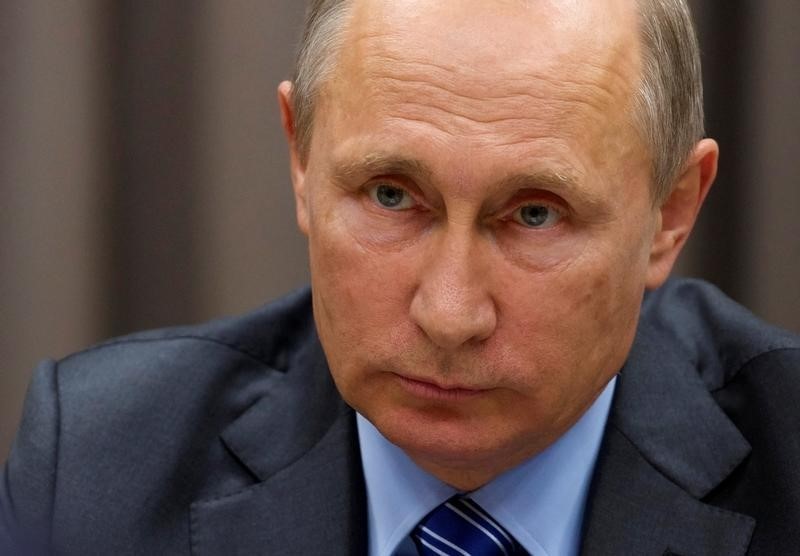(Bloomberg) -- Russia heaped pressure on Kyiv’s allies in Europe with a threat to cut off its last pipeline still supplying gas to them as the Kremlin moved to annex a large chunk of Ukraine, despite a string of setbacks in its seven-month-old invasion.
Moscow prepared to declare landslide victories in the hastily organized “referendums” it held in the territories currently occupied by its forces, having gathered votes sometimes at gunpoint. The United Nations, along with Ukraine and its allies in the US and Europe, has condemned the voting as illegal. Ukraine’s forces, meanwhile, are steadily pushing back Russia’s hold on the land it claims.
Together with last week’s order to call up 300,000 more troops, hints it may use nuclear weapons to defend the newly annexed territories and the fresh warning that Russia is ready to cut off gas supplies to Europe, the Kremlin is sending a clear signal that it’s committed to a conflict that many in the US and Europe argue it can’t win.
In Moscow, officials reject those doubts, confident that mobilization will allow the military to stanch battlefield losses as the gas cutoffs raise pressure on Ukraine’s allies in Europe with surging energy prices, aiming to outlast Kyiv’s supporters.
Gas Threats
After slashing gas supplies over the last few months, Moscow hopes to maximize the pain in Europe, which already faces record-high energy prices and the threat of rationing and supply cuts this winter. This weekend’s election of the first far-right government in Italy since World War II has raised hopes in Moscow that public opinion in Europe is shifting.
Tuesday, state-run gas giant Gazprom (MCX:GAZP) warned that it may cut supplies via Ukraine, the last link still delivering to clients in western Europe. That news came just hours after leaks were reported on the Nord Stream pipelines to Germany, where authorities said they suspected sabotage. Russia had cut flows on one of the links temporarily over the summer, though they hadn’t yet resumed, while the other pipeline never went into service because of the invasion.
After Nord Stream Hit, Russia Ratchets Up Threat on Europe’s Gas
With gas prices surging again, the Kremlin is pushing ahead to annex the territories it still controls in Ukraine, despite warnings of harsh consequences from the US.
President Vladimir Putin plans to address both houses of parliament Friday, according to people familiar with the preparations. The formalities of annexation could be complete within just a few days.
“This is a signal to show that the people in the Kremlin know what they’re doing,” said Mikhail Vinogradov, political analyst at the St. Petersburg Politics Foundation. “It’s important to demonstrate that these decisions weren’t spontaneous, but are part of the strategy.”
In reality, the Kremlin has had to repeatedly overhaul its plans since Putin first sent troops over the border on Feb. 24, hoping for a lightning victory and a collapse of the government in Kyiv. Instead, Ukrainian troops pushed back Russian forces from the capital, and a counteroffensive in recent weeks succeeded in reversing months of Kremlin gains. The hastily announced mobilization has brought the war home to Russians, spurring protests and leading tens of thousands to flee the country.
Ukraine has vowed to continue its counteroffensive and retake control of all of its territory, including what Russia has annexed. Kyiv’s allies in the US and Europe say they will continue weapons supplies, dismissing the Kremlin’s nuclear threats as irresponsible. US and European officials expect the steadily rising economic pain from sweeping sanctions on Russia will up the pressure on Putin to change course.
Why Russia’s Nuclear Threats Are Difficult to Dismiss: QuickTake
But officials say the Kremlin remains committed to its initial aim of dismembering Ukraine and taking over much of its territory, even as the chances of attaining that goal seem increasingly remote. Publicly, the Kremlin says its objectives for what it calls a “special military operation” remain unchanged, though it’s never spelled those out in detail.
Putin’s Mobilization Hits Russia’s Economy in Its Weak Spots
Officials and state media have increasingly sought to portray the fight as not against Ukraine but to defeat what they claim is determined effort by the US and its allies to break up Russia. Western officials dismiss those claims as propaganda aimed at a domestic audience that’s growing skeptical of the Kremlin’s war.
“For us, this is a question of the survival of the country,” Sergei Karaganov, chairman of a Kremlin foreign-policy advisory board said in Russia’s Profil magazine this week. “We should call it the Patriotic War,” he said, using the phrase for World War II.
Some people close to the Kremlin think Russia will ultimately be able to regain the initiative and drive further into Ukraine, possibly taking key cities including Kharkiv and Odesa that it hasn’t been able to seize so far. That would leave Ukraine only a rump of its pre-war self, the people said. While that seems far-fetched given Kyiv’s recent successes on the battlefield, Russian officials are confident their forces can fight Ukraine to a standstill and force some kind of a settlement that confirms at least some of their gains.
Putin Raises Stakes on Ukraine’s Bid for More Powerful Weapons
There’s little sign the 300,000 mobilized troops, poorly trained and motivated, will be able to turn things around on the battlefield. Military analysts say they are likely to be enough only to further slow Ukraine’s advances. Kyiv has called for more weapons from its allies, including tanks, longer-range missiles and combat aircraft, but the US and Europe so far have been cautious about expanding the range of arms supplied.
©2022 Bloomberg L.P.
